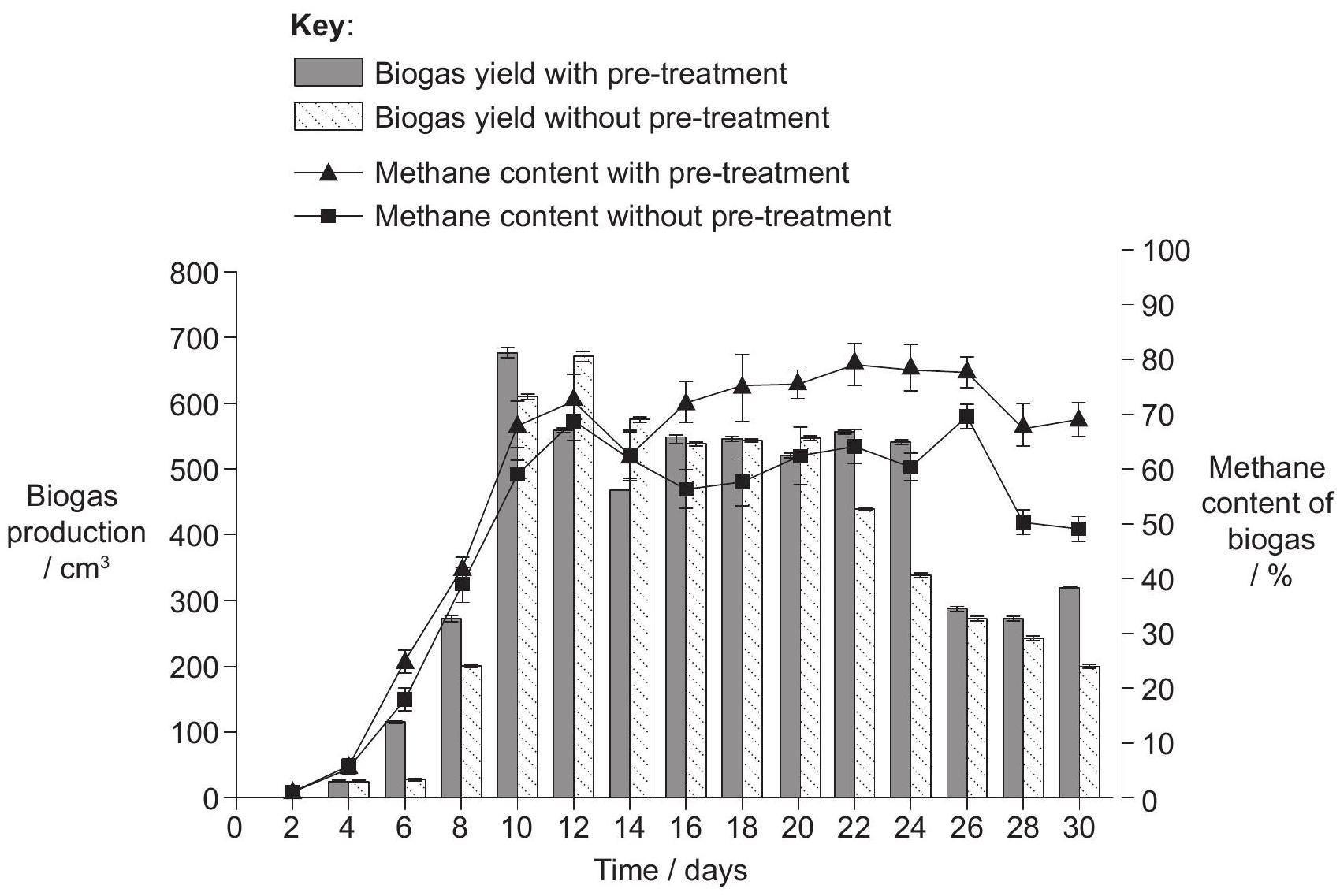Rice straw waste can be used to produce biogas, but it contains cellulose that is difficult to digest. Bacteria capable of digesting cellulose are found in the cow's digestive system. Rice straw waste was pre-treated in a batch fermenter with liquid cow manure. A control was kept under the same conditions without the liquid cow manure. The resultant products of each culture were placed in two separate continuous biogas fermentation tanks with anaerobic bacteria for 30 days under the same conditions. The graph shows the differences in biogas production and amount of methane produced. 
Suggest reasons for the use of a batch culture for the first fermentation and a continuous fermenter for the second fermentation.
a. in batch culture the product is obtained just once OR the end products of digestion are required ✓ b. in the continuous fermenter biogas/methane is harvested constantly OR continuous fermentation is more productive, so ideal for production of methane ✓
Using the graph, explain the trend in biogas production over time in the fermenter without pre-treatment.
a. first days the production is low as bacteria are few ✓ b. biogas production increases as time passes «from day 2 to day 12» as bacteria reproduce and increase «exponentially» ✓ c. biogas production levels off «between days 14 and 20» because bacterial population has reached optimum level ✓ d. biogas production decreases «from day 22 to day 30» because clogging/contamination / biofilm formation occurs OR no more reactants are added «between days 14 and 20» ✓
Suggest one reason for the higher methane content in biogas in pre-treated rice straw waste.
a. manure contains bacteria that digest cellulose to sugars ✓ b. more substrate/sugars to produce methane ✓

